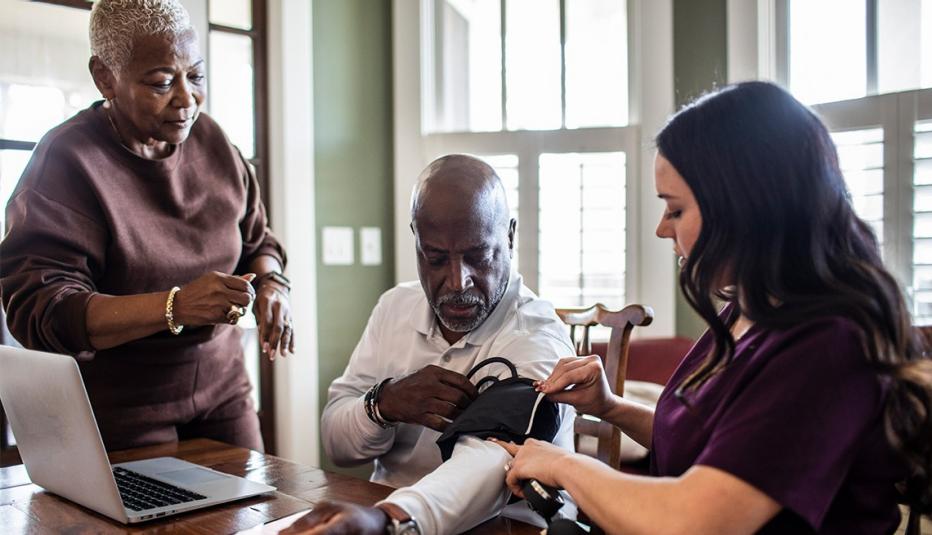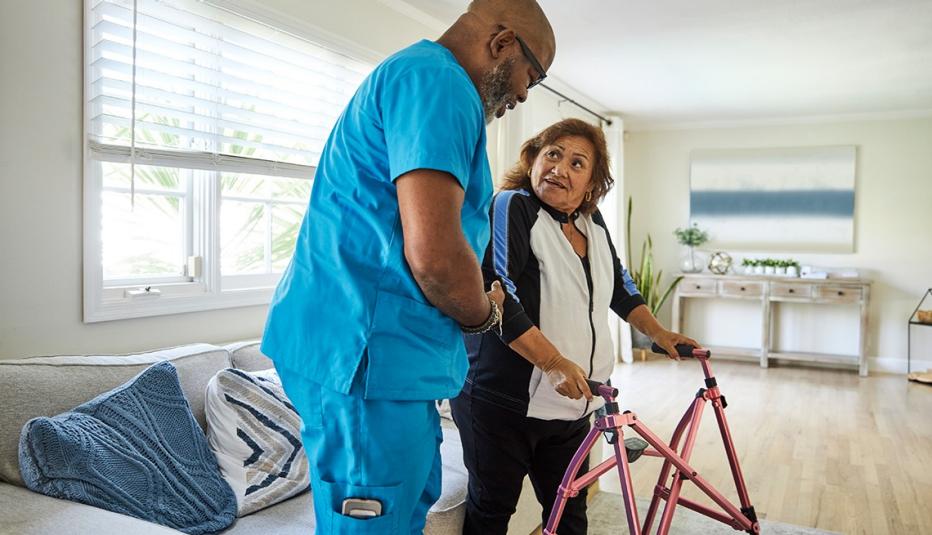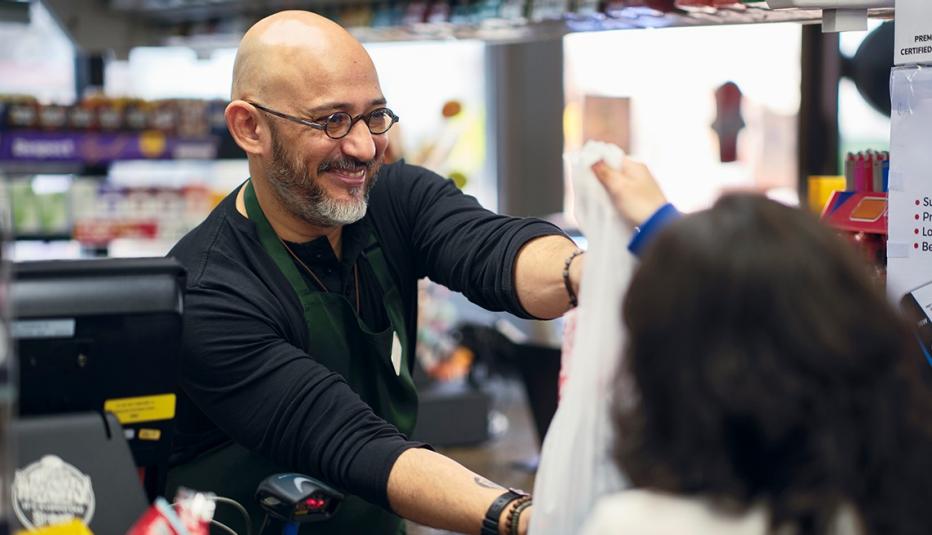AARP Hearing Center
Medicare provides vital health care coverage to millions of adults ages 65 and older and to some younger persons with a disability or end-stage renal disease. The program pays for a portion of the costs for certain inpatient and outpatient health care services and, for some, prescription drug costs.


Yet, contrary to a common belief, Medicare does not cover all health care-related costs. Using the 2018 Medicare Current Beneficiary Survey, this report details actual health care spending by people enrolled in traditional Medicare and shows the financial burden of health care by share of income.
Key Takeaways
- Many Medicare beneficiaries face significant out-of-pocket expenses to meet their health care needs.
- In 2018, people with traditional Medicare spent an average of $6,168 on insurance premiums and medical services.
- One in 10 people with traditional Medicare spent at least $10,816 in 2018 and the top quarter of spenders paid an average of $14,123.
- Health care expenses can create a significant financial burden for many Medicare beneficiaries, with half the people with traditional Medicare spending at least 16 percent of their income on health care.
- One in 10 beneficiaries spent at least 52 percent of their income on health care.
Reasons Behind Out-Of-Pocket Health Care Costs in Traditional Medicare
Several factors explain why many people with traditional Medicare pay significant amounts out of pocket for health care, including:
- Traditional Medicare does not have a limit on beneficiaries’ annual out-of-pocket spending.
- People with traditional Medicare generally pay a monthly premium for physician (Part B) coverage and for prescription drug (Part D) coverage. A small share of beneficiaries also pay a monthly premium for inpatient hospital (Part A) coverage.
- Traditional Medicare requires that beneficiaries contribute to the cost of their care in the form of deductibles, coinsurances, and copayments.
- Many people covered under traditional Medicare buy private supplemental insurance—such as Medigap or employer-sponsored retiree coverage—to help pay their out-of-pocket costs for Medicare-covered services.
- Beneficiaries pay substantial amounts out of pocket for services and devices not covered by traditional Medicare, including hearing aids, eyeglasses, dental care, and long-term care services.
Medicare Beneficiaries’ Spending for Health Care
People covered by traditional Medicare paid an average of $6,168 for health care in 2018. They spent almost half of that money (47 percent) on Medicare or supplemental insurance premiums. The remainder was out-of-pocket spending for health care services that Medicare covers (26 percent) and for those that the program does not cover (27 percent).
The amount that people with traditional Medicare spend on health care varies based on their health status and whether they have a chronic condition. People in fair or poor health paid an average of $2,971 out of pocket for health care services in 2018; the amount incurred by people in excellent or very good health was $1,956. People with Parkinson’s disease spent more on health care services than those with any other type of illness, an average of $3,773.
Financial Burden by Share of Income
Half of the people with traditional Medicare coverage spent 16 percent or more of their income on premiums and health care services combined in 2018. Among people with incomes up to 200 percent of the federal poverty level (FPL), half spent at least 27 percent of their income on health care.
Traditional Medicare beneficiaries who are under age 65, are women, or identify as Black or Hispanic typically spent a larger share of their income on health care.
In 2018, 10 percent of traditional Medicare beneficiaries reported delaying care due to cost and 10 percent reported experiencing problems paying for their medical bills. This was especially true for beneficiaries with lower incomes: 18 percent of those with incomes up to 200% of the FPL postponed care because of cost and 19 percent had difficulties paying medical bills.
Conclusion
Spending for health care consumes a significant share of many Medicare beneficiaries’ incomes. Those who live on modest incomes or who are in poor health face especially heavy financial burdens. A key guiding principle for all policy proposals affecting Medicare should be to ensure that all beneficiaries have affordable access to the health care they need.
Previous Reports



































































